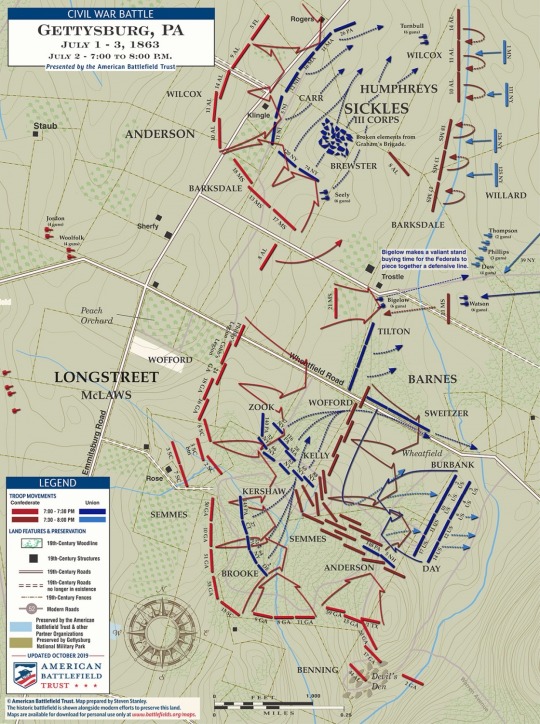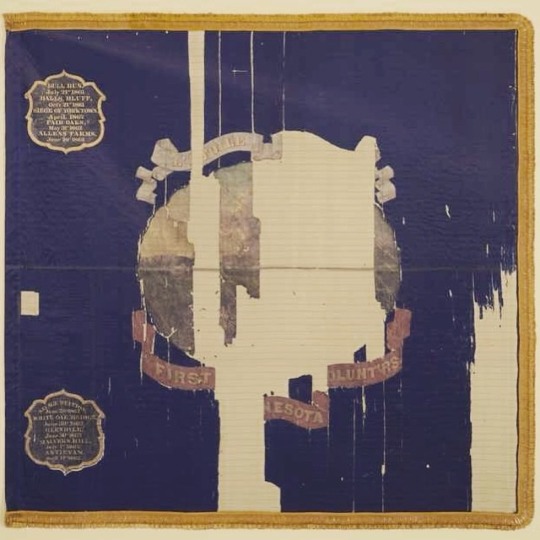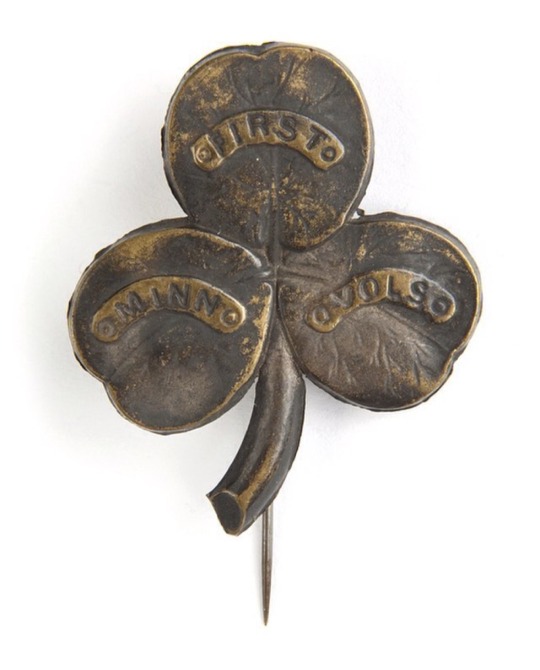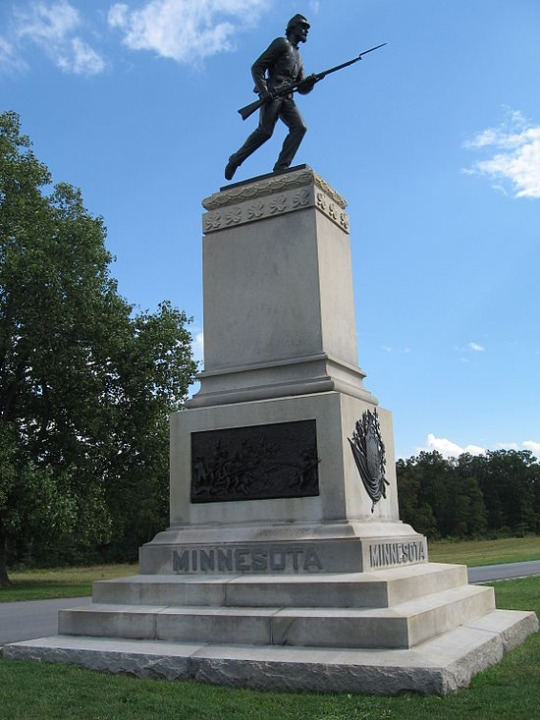#my 2nd favorite alabamian...
Explore tagged Tumblr posts
Text

back on the marble hornets grind again
#marble hornets#tim wright#tim marble hornets#slenderverse#virgil arts#my 2nd favorite alabamian...#i missed drawing him but damn i need to do another set of face studies lmao this was a struggle
1K notes
·
View notes
Text
Americans are really awful about our history. But for those who do know some of our history, there is the idea that the Union Army of the Potomac was saved by the 20th Maine’s stand on Little Round Top.
Why is this? Partly it has to do with what they did. There can be no denying that. The other part, I believe, is that the people who write the history books are often professors. What was Colonel Chamberlain? He was a college professor who went to war. James McPherson once was asked who his favorite Civil War person was. He, rather sheepishly according to his friend David Hackett Fischer, replied “Chamberlain” and when pressed would explain it was because they were both college professors.
This is not to say that the Mainers didn’t save the day on July 2, 1863. Its just that it wasn’t the only time the Union forces were saved from catastrophe on July 2nd. Hell it was even the only time that afternoon.
As the fighting on Little Round Top was nearing its climactic charge around 5:30 p.m., there were two other attacks being made by Longstreet’s First Corps and part of A.P. Hill’s Third Corps, both of the Army of Northern Virginia, that were on the verge of breaking through.

Just north Hood’s Division, which was fighting in the Devil’s Den and trying to capture Little Round Top, there was McLaws Division of Longstreet’s Corps was trying to push through the Trostle farm. They had gotten bogged down fighting along Plum Run and in the the place that became known as The Wheatfield. The Wheatfield would change hands four times before the Union forces were pushed back.
To their north was Anderson’s division which was part of A.P. Hill’s Third Corps of the Army of Northern Virginia. They were trying to make headway through what has gone down in history as the Peach Orchard. In their way was the A.A. Humphrey’s understrength division of about 1,000 men. His division was taking the full weight of the Anderson’s division in addition to Barksdale’s Mississippi brigade (part of McLaws’s Division) which was spilling over from the attack further south. In fact, McClaws brigade alone outnumbered Humphrey’s division (1,500 to 1000 according to the sources).
A little after 6 p.m., Humphrey’s division was about to collapse, being overwhelmed by the Confederate regiments from Alabama and Florida that made up Wilcox’s brigade.
Major General Meade, commander of the Army of the Potomac had already stripped himself of reserves to support the fight on his left flank where the III Corps was trying to hold on. The III Corps commander, Major General Dan Sickles (who precipitated this impending disaster) was now wounded and being carried off the field to have one of his legs amputated. With Humphrey’s Division giving way, a gap was opening up in the line.
While Meade was trying to find more troops from elsewhere, he was being assisted by Major General Winfield Scott Hancock, commander of the II Corps. Going north from the end of the Union line at the Round Tops, V Corps and III Corps were mixed together trying to hold off Longstreet and A.P. Hill’s attacks. Just north of them was Hancock’s II Corps. II Corps was responsible for Cemetary Ridge, the center of the Army of the Potomac’s fish hook line.
Hancock started feeding troops from his II Corps into the fight to try and close the gap that was forming. He committed the closest units at hand. First, he had a Colonel George Willard’s brigade of New York regiments check the Barksdale brigade as it tried to exploit the opening.
As Willard’s men fought to drive the Missippians back from the Emmitsburg Road, Hancock could see the Alabamians and Floridians of Wilcox’s Brigade nearing the base of Cemetary ridge. If they got on the ridge, they could start to roll up the II Corps’ flank and rupture the Army of the Potmac’s lines entirely.
Looking around, the only troops he could see were the 1st Minnesota Voluntteer Infantry Regiment.


The 1st Minnesota was under the command of Colonel William Colvill. It had been the first regiment to reach Washington DC after Lincoln called for volunteers. It had seen action at the First Battle of Bull Run/First Manasas, where it was one of the last units of the Union forces to leave the field and left it in good order, unlike other regiments which it was brigades with which had retreated in confusion. At Antietam, it been part of Sedgwick’s attack on the West Woods. At Bull Run it had lost 20% of its strength. Antietam cost it another 28% of its remaining men. On July 2, 1863, Colvill had 262 men (one company was detached and not available on July 2) when Hancock spotted his regiment.
Hancock rode over to the regiment and pointed at the nearest Confederate banner, telling Col. Colvill, “Advance Colonel, and take those colors.” Those colors were among the thousand or so confederate soldiers that Wilcox still had ready to go up Cemetary Ridge. The 1st Minnesota would be outnumbered 5 to 1.
Colonel Colvill quickly pointed the regiment in the right direction, had them fix bayonets and charged into 11th Alabama, part of Wilcox’s brigade, while taking fire from two brigades (Wilcox’s and . Wilcox would report after the battle that he had almost captured Cemetary Ridge “when still another line of infantry descended the slop in our font at the a double-quick.... Three several times did this last of the enemy’s lines attempt to drive my men back and were as often repulsed.”
The 1st Minnesota had five flag holders go down in the attack. Of the 262 men that took part in the charge, 215 were dead or wounded when the fighting ended on July 2. Among the wounded was Colvill, his second in command. The remaining 47 men would eventually withdraw, without the Alabamian flag, under its senior surviving officer, Captain Nathan Messick after it was clear Wilcox’s attack had been stalled.

The 82% the single greatest loss to any Union regiment during the Civil War. Only the 1st Texas at Antietam had suffered worse casualties.
Despite being reduced to less than a company’s authorized strength, the 1st Minnesota was not done. Moved to a position about a 150 yards from the Copse of Trees on Cemetary Ridge, they thought their battle was over. By some twist of fate, their position was just south of the objective of the Pickett’s Charge, the Copse of Trees, and about 200 yards south of point where the Confederate tried to break the line, known as The Angle.
Reinforced by the company which had been detached for duty elsewhere on July 3, the 1st Minnesota would once again charge into advancing rebels when they started to push through near the Codori farm house on Cemetary Ridge. Men started to fall again, and of the last three captains of the regiment, two would die, leaving Captain Henry Coates in command of the survivors. This time, however, when they attacked, they fought their way into the 28th Virginian Infantry Regiment. During the chaotic, close quarters fighting, Private Marshall Sherman of C Company captured the 28th Virginia’s colors.

After the war, Hancock would say that “No soldiers on any field, in this or any other country, ever displayed grander heroism.”
Minnesota still holds the colors as a war trophy. They used to be on display but haven’t been for a while, which is a shame.
The 1st Minnesota’s lineage is carried on by the 2/135th Infantry Regiment of the Minnesota Army National Guard.
2 notes
·
View notes